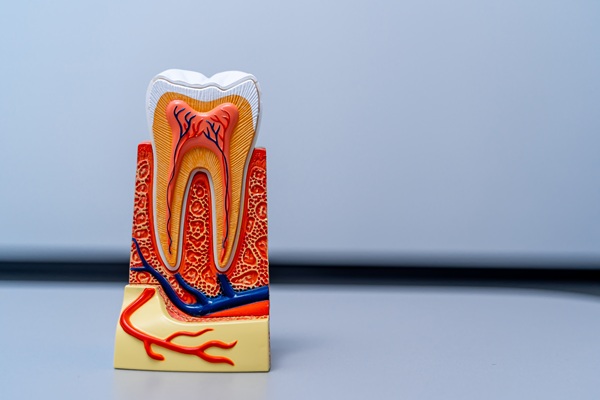How Endodontists Save Teeth and Relieve Discomfort

An endodontist is a dentist who has additional training in diagnosing and treating issues that affect the inner part of the tooth, called the pulp. These dentists often spend most of their time performing procedures like root canals on teeth with damaged pulped chambers. A root canal involves going inside a tooth and removing soft tissues in the pulp chamber, bringing an end to the pain being caused by an infection or irritants in the mouth.
How an endodontist saves teeth with root canal therapy
Endodontists often get a bad rap because of a common misconception that root canal therapy is extremely painful, but that is not true. Most people do not feel pain during root canals since local anesthetics are used to numb the region of the mouth being worked on.
Endodontists are like superheroes for your teeth. They often bring an end to some of the worst toothaches a person could experience. Their additional training on issues that affect the inner part of teeth makes them the most qualified type of dentist to perform root canal therapy.
Root canal therapy
Performing this procedure is one of the primary responsibilities of an endodontist. Some of the reasons why a root canal might be needed include:
- To address severe tooth decay that damages the pulp chamber
- To treat an infected tooth
- To save teeth damaged by severe chips, breaks, and cracks
The procedure
Getting a root canal often starts with an endodontist talking to a patient about their symptoms and using diagnostics like X-rays to determine if the tooth can be saved with root canal therapy. Local anesthetics are injected into the region being worked on at the start of the procedure to prevent the patient from feeling pain as the dentist works. A dental drill is used to access the pulp chamber, and dental files are used to remove the soft tissues stored in there.
Once the pulp chamber has been cleaned out, disinfectants are applied to kill any bacteria there before using a rubber substance called gutta-percha to close up the tooth. A crown is usually placed on a tooth that has been repaired with a root canal to hold what’s left of it together and protect it from forces generated by teeth when chewing.
Apicoectomy
Endodontists often perform this procedure when a conventional root canal has failed to bring the expected results. The procedure is also performed when a tooth’s root is crowding into the space of another tooth. As is the case with root canals, apicoectomies are typically recommended as a last-resort treatment to save a tooth before options like extraction are recommended.
The process
Endodontists start apicoectomies by administering local anesthetics to numb the part of the mouth being worked on. They then make an incision through the patient’s gum tissues to reach the root. A few millimeters of the tooth are taken off, as well as any infected tissues in the region. Another root canal is performed, and gum tissues are sutured to close the incision. The procedure takes anywhere from 30 to 90 minutes.
Our endodontist can save your tooth
Dealing with a dental issue that affects the pulp chamber of a tooth? Call or visit our Ukiah clinic to explore treatment options with our endodontist.
Request an appointment here: https://santarosaendodontics.com or call Santa Rosa Endodontics at (707) 409-1177 for an appointment in our Ukiah office.
Check out what others are saying about our dental services on Yelp: Endodontist in Ukiah, CA.
Recent Posts
A non-surgical root canal is an endodontic procedure known for preserving a tooth affected by severe decay, infection, or trauma, all without incisions in the gum tissue. Many patients become anxious when they hear the term "root canal," yet modern techniques can provide a gentler experience than expected. Endodontists often recommend this treatment when a…
A general dentist can perform basic tasks in tooth care, such as X-rays, oral examinations, filling cavities, and extractions. However, patients may be referred to an endodontist for more complex work, such as certain root canals. When is it likely for a dentist to refer a patient to this dental specialist?While a filling can fix…
Root canal treatment is often the first line of defense for treating teeth with compromised pulp chambers. The pulp chamber is the innermost layer of a tooth, and it stores nerves, blood vessels, and connective tissues. The chamber is sealed off from the rest of the tooth to protect it against bacteria and other irritants…
A root canal can preserve and strengthen a severely damaged or infected tooth. When seeing a root canal dentist, asking informed questions can provide clarity, ease concerns, and improve treatment outcomes. Understanding the procedure helps make the experience more comfortable and ensures you are well-prepared for each step.While each patient's situation is unique, the following…


